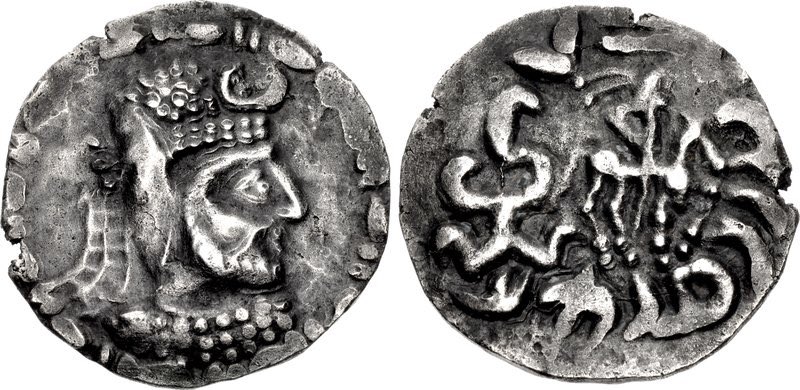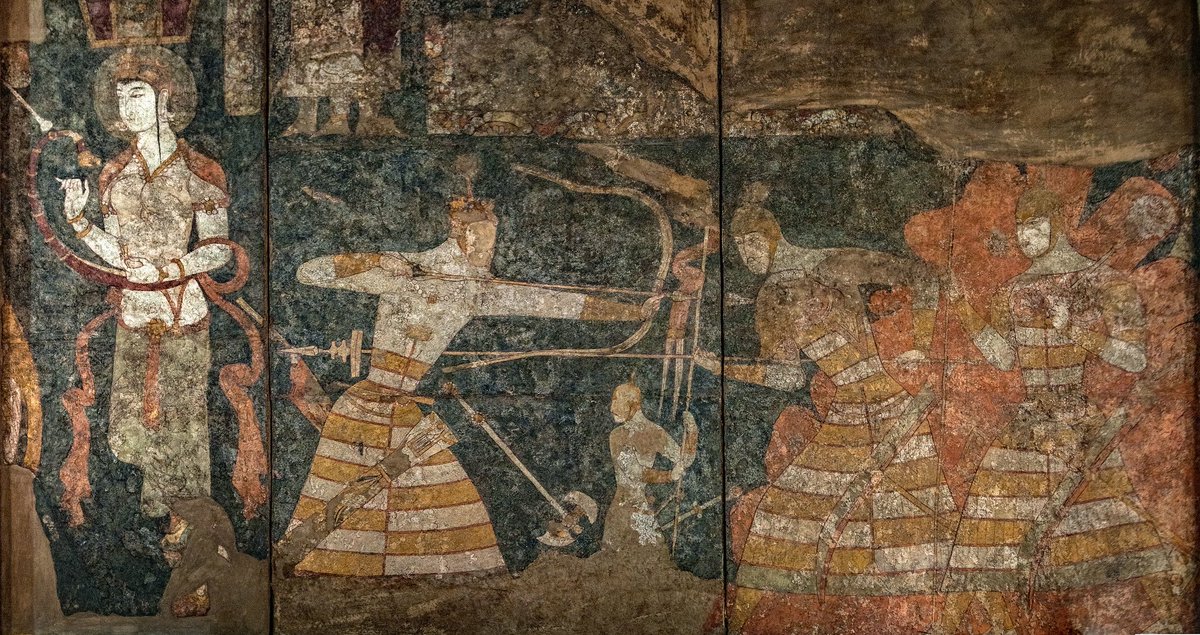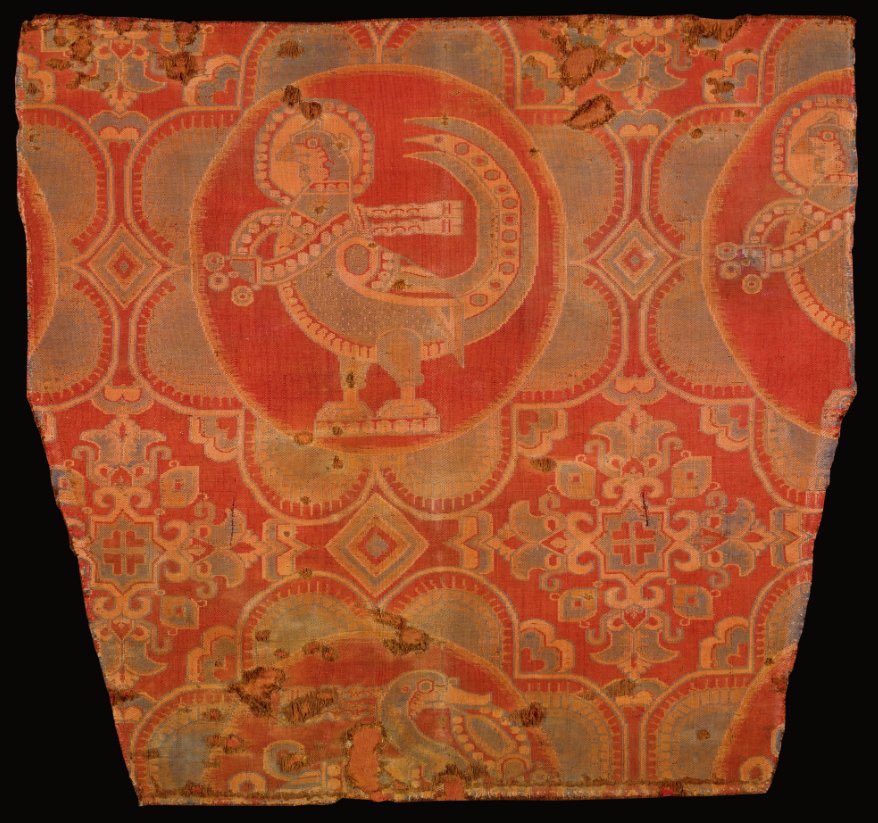
You might think looking at these paintings that Panjakent society was a society of warriors.
While there were the odd few pieces of arms and armour found there, so far, no stables have been found.
These paintings usually adorned ordinary houses and often told stories.
THREAD
While there were the odd few pieces of arms and armour found there, so far, no stables have been found.
These paintings usually adorned ordinary houses and often told stories.
THREAD
https://twitter.com/HistorianofIran/status/1238148985476591618
The most famous of these stories is the “Rostam cycle,” the earliest evidence of the famous hero from Ferdowsi’s #Shahnameh. Rostam wears his leopard skin coat and has an elongated skull, a hark back to the Hunnic / Hephthalite kings of Bactria. ~NA @eranudturan 







In this story, Rostam sets out to fight the divs (demons), encounters Avlad, has to fight a dragon, duels with the King of the divs, and fights the army of the divs. The whole composition bends around the corners of the room, and was probably copied from a scroll ~NA
Rostam & other #Shahnameh heroes probably weren’t “national” heroes; the way their names appear in #Sogdian suggest that the Sogdians learned of them from #Iran. Heroes inc Godarz, Fereydun, Sohrab, are mentioned in a 9th C scroll from Dunhuang:
patreon.com/posts/sogdian-… ~NA
patreon.com/posts/sogdian-… ~NA
One character who did become popular was Prince Siyavash, esp in #Bukhara. In the #Shahnameh, Siyavash flees to Turan, where he founds a city and is eventually killed at the command of Afrasiyab. Mourning rituals for Siyavash were held in Bukhara: patreon.com/posts/founding… ~ NA
In Khwarazm, Siyavash was revered as a deity of dying and regrowing vegetation, and is possibly pictured as the horseman on the reverse of Khwarazmian coins ~NA 





By the time of Ismail Samani’s arrival to #Bukhara, there were shrines to both Siyavash and Afrasiyab (ironically), although only Siyavash got a mourning festival, which involved sacrificing a rooster, musicians, and storytellers.
As well as the earliest surviving depiction of Rostam, the Sogdians can be credited with the earliest surviving manuscript, in which Rostam fights demons, from Dunhuang, 9th C
Listen to my (now slightly outdated) reading of the text in Sogdian: patreon.com/posts/23395330
Listen to my (now slightly outdated) reading of the text in Sogdian: patreon.com/posts/23395330

Another #Shahnameh story in Panjakent painting is the story of Faramarz, Rostam’s son. He travels to India, defeats a demon, and receives the Indian princess in marriage.
It’s not all Shahnameh stories! There are also Aesop’s fables, tales from the Indian Panchantantra, and Mahabharata stories too, as well as other folk stories that don’t have parallels in early medieval Eurasia. ~NA 







There are at least two versions of #Sogdian heroic epics that don’t have parallels in Iran or India. It involves war between two opposing camps, nowadays labelled “Rings” and “Dragons,” based on their unique identifiers - sword pommels ~NA 

In the first scene, the king of Rings receives a message from a warrior and throws his bowl in shock - someone close to him has died in battle. The following scenes are battle scenes, culminating in a duel between the two kings. The king of Rings shoots the king of Dragons. ~NA 



The king of Rings must have been aided by a divine power. The same motif is shown on a silver dish, and the duel of an archer vs a lancer is also shown in one of the Rostam cycle paintings. It most closely harks back to the duel of Rostam and Esfandiyar in #Shahnameh. ~NA 







After this victory, the Rings besiege the fort of the Dragons. However, the army of the Dragons sallies forth, led by a richly dressed youth in a chariot - the son of the king of the Dragons, taking revenge for his father. ~NA @eranudturan #HistoryofIran 

Not all the stories are so serious. In this comedic tale pictured below, two drunk foreign banqueteers are served a heron by a servant, but the servant has stolen one of the heron’s legs. The two banqueteers note something odd about the heron, and ask what’s going on. ~NA 

The servant replies that all herons have one leg, and invites the two men to go to the lake to see. Sure enough, they’re all stood on one leg. One of the banqueteers shouts out, the herons stand on both legs, then fly away. “See! They have two legs, not one!” he exclaims ~NA
The servant replies “That’s only because you shouted at them. Yesterday’s banquet heron didn’t show you his other leg because you didn’t shout at it.” 😅😅😅
There are too many stories to tell in a single twitter thread.
If you’re interested, I recommend the text “Legends, Tales, and Fables in the art of Sogdiana” by Boris Marshak.
I’ll write a few of them up at patreon.com/eranudturan too sometime.
~ NA @eranudturan
If you’re interested, I recommend the text “Legends, Tales, and Fables in the art of Sogdiana” by Boris Marshak.
I’ll write a few of them up at patreon.com/eranudturan too sometime.
~ NA @eranudturan

• • •
Missing some Tweet in this thread? You can try to
force a refresh











